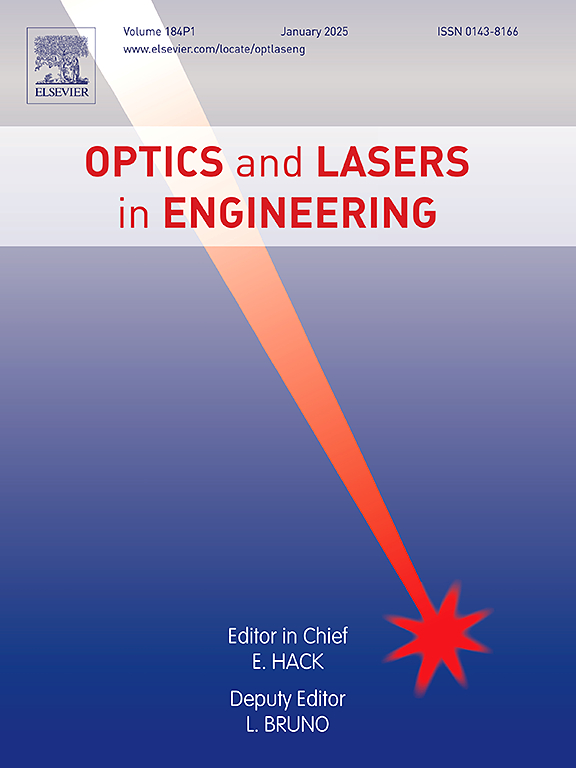Multi-address coding parallel scanning 3D microscopy
IF 3.5
2区 工程技术
Q2 OPTICS
引用次数: 0
Abstract
A parallel scanning microscopic imaging system using code division multiple access (CDMA) technology is proposed. By spatially and temporally encoding the illumination beam, and decoding the composite signal after high-speed sampling, the utilization efficiency of the detector is effectively improved, enabling parallel scanning of points at different distances with just one sensor. During 3D microscopy, there is no need to scan the axial direction. The working mechanism of the multi-address coding parallel scanning microscopic imaging system is introduced, and the implementation methods of coding and decoding are explained. According to rigorous mathematical derivations, a mathematical model of the imaging system is built, and the effectiveness of the system is verified through experiments. Moreover, we found that both the number of coding bits and power of the light source have an impact on the image quality of the system. With a 32 bits coding and a light power of 2 mW, our system achieved the highest image quality. And we tested the system's sensitivity to stray light and beam non-idealization. The experimental results show that when the proportion of stray light power is <40 % and the angle deflection of incident light is <1.5°, the imaging quality of the system is almost no longer affected by these two main factors.
多地址编码并行扫描三维显微镜
提出了一种采用码分多址(CDMA)技术的并行扫描显微成像系统。通过对光照光束进行时空编码,并对高速采样后的复合信号进行解码,有效提高了探测器的利用效率,实现了单传感器对不同距离点的并行扫描。在三维显微镜中,不需要扫描轴向。介绍了多地址编码并行扫描显微成像系统的工作原理,并对编码和解码的实现方法进行了说明。根据严格的数学推导,建立了成像系统的数学模型,并通过实验验证了系统的有效性。此外,我们发现编码位数和光源功率对系统的图像质量都有影响。采用32位编码和2兆瓦的光功率,我们的系统实现了最高的图像质量。我们还测试了系统对杂散光和光束非理想化的灵敏度。实验结果表明,当杂散光功率占比为<; 40%,入射光的角度偏转为<;1.5°时,系统的成像质量几乎不再受这两个主要因素的影响。
本文章由计算机程序翻译,如有差异,请以英文原文为准。
求助全文
约1分钟内获得全文
求助全文
来源期刊

Optics and Lasers in Engineering
工程技术-光学
CiteScore
8.90
自引率
8.70%
发文量
384
审稿时长
42 days
期刊介绍:
Optics and Lasers in Engineering aims at providing an international forum for the interchange of information on the development of optical techniques and laser technology in engineering. Emphasis is placed on contributions targeted at the practical use of methods and devices, the development and enhancement of solutions and new theoretical concepts for experimental methods.
Optics and Lasers in Engineering reflects the main areas in which optical methods are being used and developed for an engineering environment. Manuscripts should offer clear evidence of novelty and significance. Papers focusing on parameter optimization or computational issues are not suitable. Similarly, papers focussed on an application rather than the optical method fall outside the journal''s scope. The scope of the journal is defined to include the following:
-Optical Metrology-
Optical Methods for 3D visualization and virtual engineering-
Optical Techniques for Microsystems-
Imaging, Microscopy and Adaptive Optics-
Computational Imaging-
Laser methods in manufacturing-
Integrated optical and photonic sensors-
Optics and Photonics in Life Science-
Hyperspectral and spectroscopic methods-
Infrared and Terahertz techniques
 求助内容:
求助内容: 应助结果提醒方式:
应助结果提醒方式:


